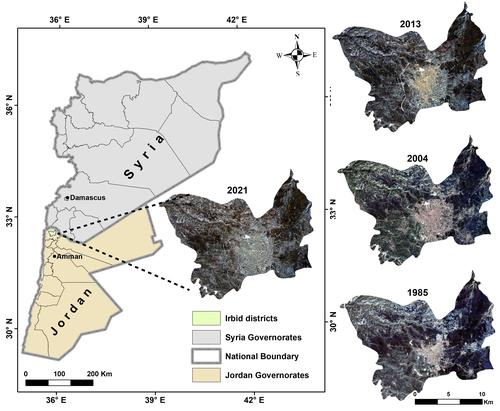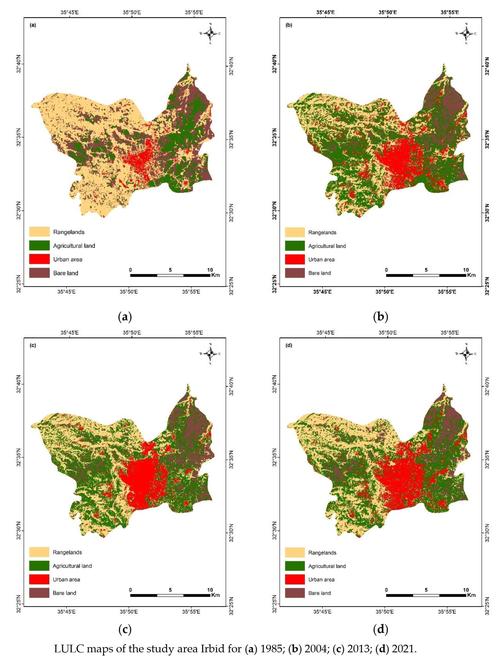Evaluating the Impact of the Influx of Syrian Refugees on Land Use/Land Cover Change in Irbid District, Northwestern Jordan
Sattam Al Shogoor, Wahib Sahwan, Khaled Hazaymeh, Eman Almhadeen and Brigitta Schütt
Click here to view the Article as PDF
Abstract
The refugee movement creates urban and environmental pressures at their destination locations. This pressure often presents in the form of Land Use/Land Cover (LULC) change. This study seeks to understand the impact of the Syrian refugees’ influence on changing the urban and agricultural land dynamics in Irbid district in northwestern Jordan from 1985 to 2021, including the period of the civil war in Syria, using Landsat Thematic Mapper (TM) images for the years 1985 and 2004, and the Landsat-8 Operational Land Imager (OLI) for the years 2013 and 2021. The Google Earth Engine (GEE) platform was used to conduct all image processing and perform calculations and classification analysis using the Random Forest (RF) approach. The study of the classified images compared LULC before and during the Syrian crisis using images from 1985, 2004, 2013, and 2021. The results show that the urban area increased. In parallel, agricultural land increased. During the Syrian refugee crisis, agriculture became a significant livelihood activity for Syrian refugees. In summary, the movement of the refugees to Irbid district caused an increased demand for land and housing, which accelerated the building and construction process.
Keywords: Urban Area; Agricultural Land; Syrian Crisis; Google Earth Engine; Landsat.

